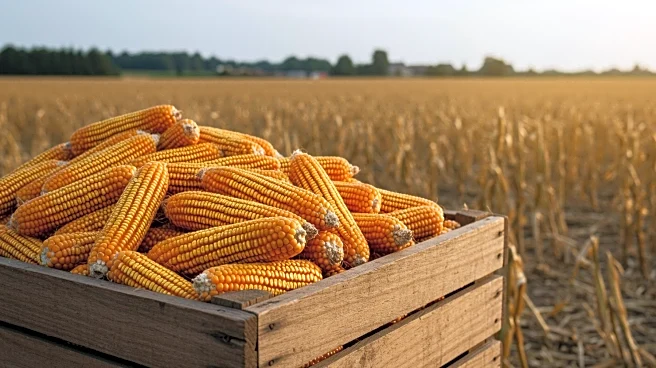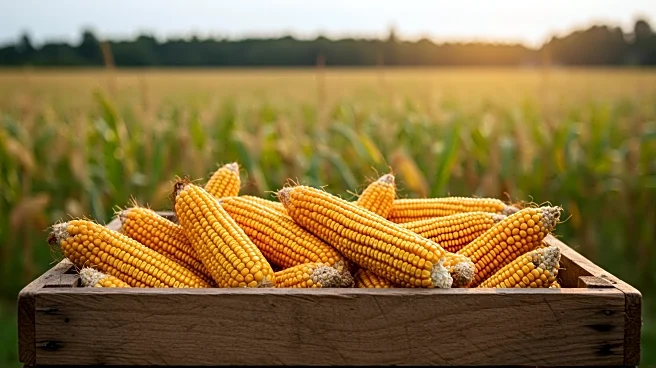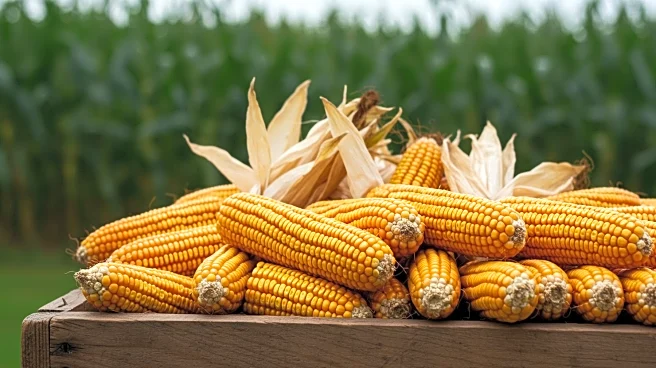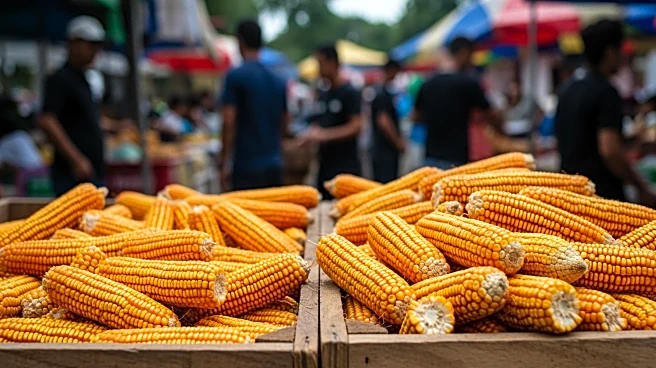What's Happening?
The U.S. Department of Agriculture (USDA) has released updated estimates indicating a decline in dry edible bean production in the United States for 2025. Despite an improvement in yields, the overall production is expected to decrease due to a significant reduction in the harvested area. The USDA's report forecasts average edible bean yields at 2,203 pounds per acre, an increase of 122 pounds per acre from the previous year. However, the harvested area is projected to decrease by 9.3%, totaling 1.364 million acres. North Dakota, the largest producer of edible beans in the U.S., is expected to see an 18% reduction in harvested area, bringing it down to 590,600 acres. Overall, the USDA forecasts total edible bean production at 1.363 million tonnes, compared to 1.419 million tonnes in the 2024/25 period.
Why It's Important?
The decline in edible bean production has significant implications for the U.S. agricultural sector and related industries. A reduction in production could lead to increased prices for consumers and affect the supply chain for food manufacturers that rely on these beans as raw materials. North Dakota's substantial decrease in harvested area highlights regional challenges that could impact local economies dependent on agriculture. Additionally, the decrease in production may influence export markets, as the U.S. is a major supplier of edible beans globally. Stakeholders, including farmers, food processors, and policymakers, will need to address these challenges to mitigate potential economic impacts.
What's Next?
As the USDA's forecast becomes a reality, stakeholders in the agricultural sector may need to explore strategies to optimize production and manage supply chain disruptions. Farmers might consider diversifying crops or adopting new technologies to improve yield efficiency. Policymakers could also play a role by providing support through subsidies or research initiatives aimed at enhancing agricultural productivity. The industry will likely monitor market responses and adjust pricing strategies to balance supply and demand.











